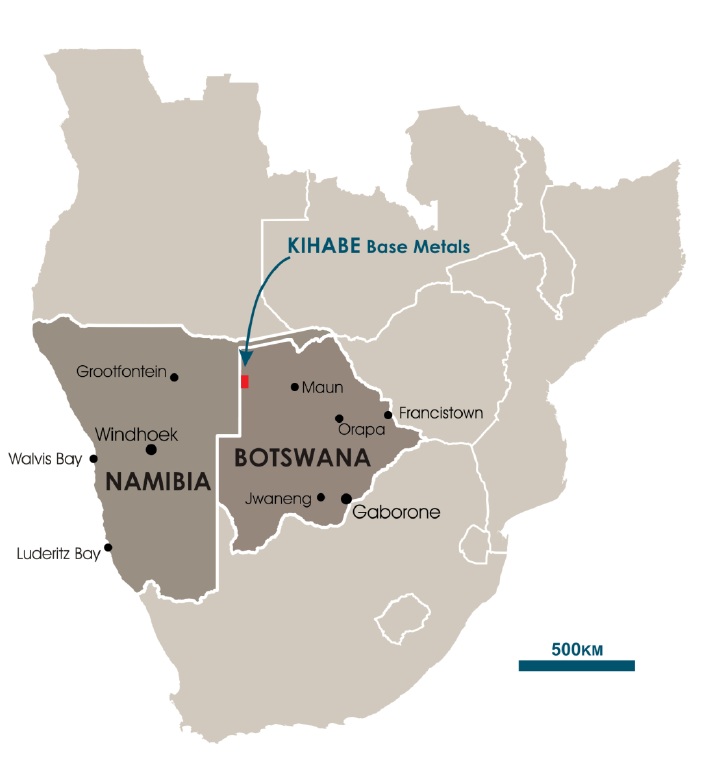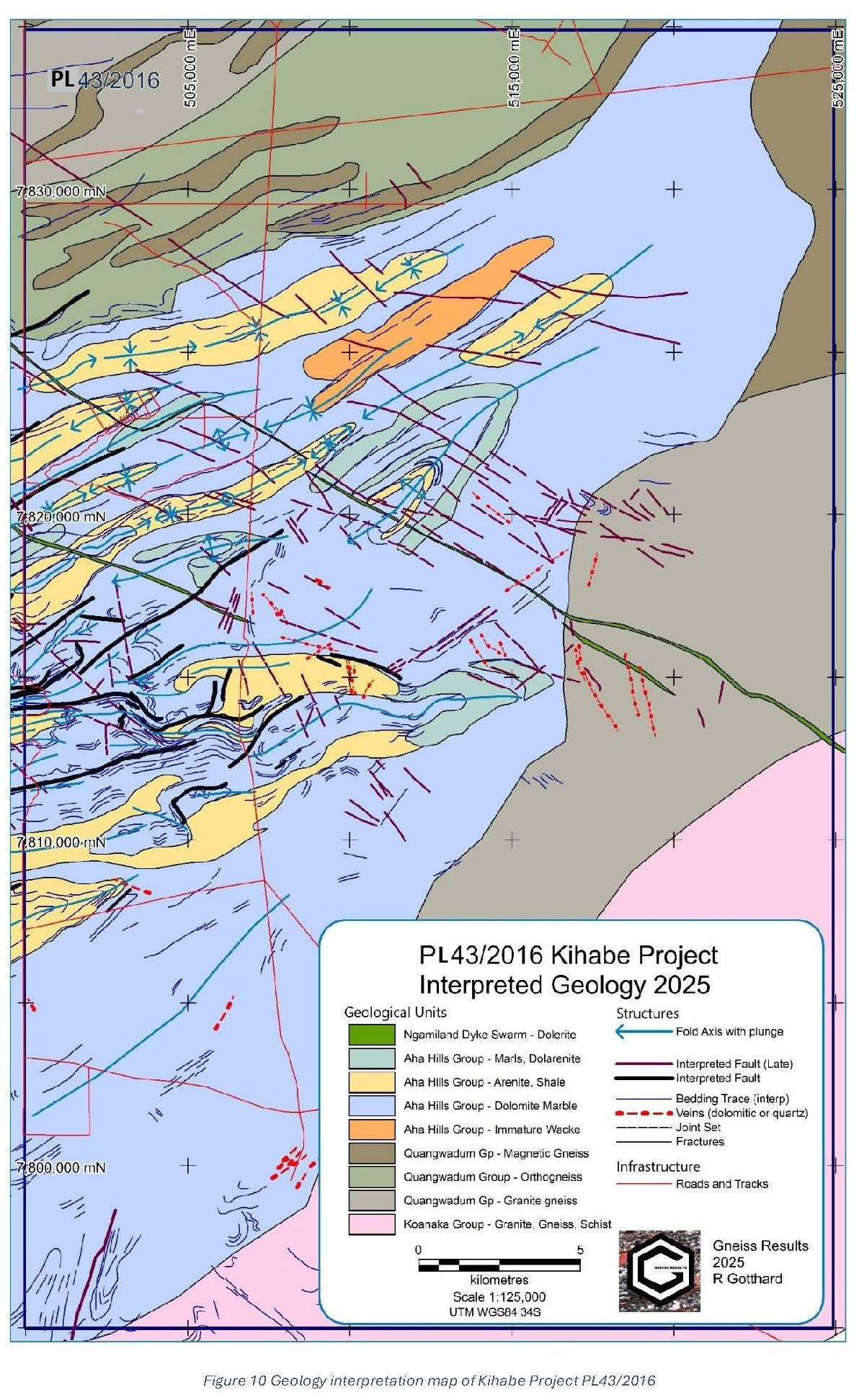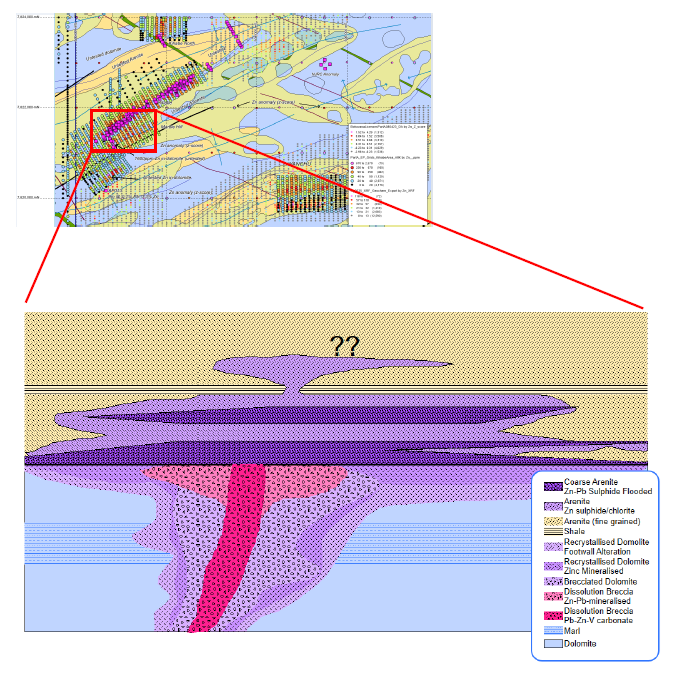Kihabe Project
Botswana
Project Highlights
Base Metals Exploration in Botswana, Africa
- Located in West Ngamiland, Boswana
- 1,000km² – 100% MTB Owned
- Serviced by roads, local airstrip
- Two Zn-Pb-Ag Mineral Resources
- Strong exploration potential
Project Location & Background
The Kihabe Project (PL43/2016) is situated in West Ngamiland, within the Republic of Botswana — a politically stable and strongly pro-mining jurisdiction. Botswana ranks 14th globally and 1st in Africa for mining investment attractiveness according to the Fraser Institute (2025).
The project covers an area of 1,000 km² and is 100% owned by MTB. It is well serviced by roads and a local airstrip, providing excellent accessibility.
Kihabe hosts two defined Zn-Pb-Ag mineral resources with significant exploration upside, supported by secure tenure laws, a 3% base metals royalty, and a highly skilled local workforce.

Kihabe Project Mineralisation
Highly Prospective Base Metals Project


The Kihabe Project is located within a belt of Neoproterozoic Damaran carbonates in northwestern Botswana, an area highly prospective for Berg Aukas–style Zn-Pb and Tsumeb–style Cu-Zn-Pb mineralisation.
Historical work has outlined extensive low-grade, large-tonnage sulphide and oxide zinc mineralisation within sandstones typical of a Mississippi Valley Type (MVT) system. More recently, a newly recognised carbonate replacement system within dolomite has revealed exceptionally high-grade vein and breccia mineralisation exceeding 25% Zn and 19% Pb.
Over 30 km of base metal anomalies remain largely undrilled, with numerous untested soil and copper-cobalt anomalies, no modern geophysics, and excellent potential for low-cost exploration using remote sensing and hyperspectral techniques.
Geochemistry Data
Regional precompetitive 1 km x 1 km soil sampling by the Botswana Geological Survey in the 1980s first identified extensive base metal anomalism across the Kihabe region.
Despite defining a +30 km Zn-Pb corridor that includes the Kihabe Resource, many of these anomalies were never followed up, with around 20 km remaining untested by drilling or geophysics.
The dataset includes ~18,300 pXRF soils, ~350 conventional soils, and 15 rock chip samples. A copper anomaly over 3 km in basement gneisses also remains underexplored.
Newly completed regolith and structural mapping (2025) now provides crucial geological context, refining stratigraphic and structural targets for focused follow-up exploration and discovery.
Copper Potential
Seventeen anomalies have been identified within the P43/2016 concession, including a major semi-coherent Cu-Co-Pb-Zn enrichment zone centred on the Gossan Anomaly.
Mineralisation is associated with early D1 thrusts, folding, and later oblique-slip faulting, creating ideal structural conditions for fracturing and veining.
Numerous single-sample anomalies occur within 1 km² grids, though copper responses are subdued by calcrete cover, warranting detailed follow-up sampling, mapping, and geophysical surveys.
Resources
Two resources have been estimated and are reported compliant with the standards of JORC 2012.
Kihabe is a large low-grade mineral resource of sphalerite-galena with subsidiary zincian chlorite and potential for vanadium credits.
Nxuu is a predominantly nonsulphide zincian chloritecarbonate (baileychlore-smithsonite) with potential for vanadium credits and copper sulphide Early-stage metallurgy has demonstrated marketable quality sulphide concentrates can be produced via froth flotation at Kihabe, and early leach testing at Nxuu shows encouraging zinc recoveries.
The remainder of the Project has not been adequately explored using modern geophysical, remote sensing, or infill soil sampling.

